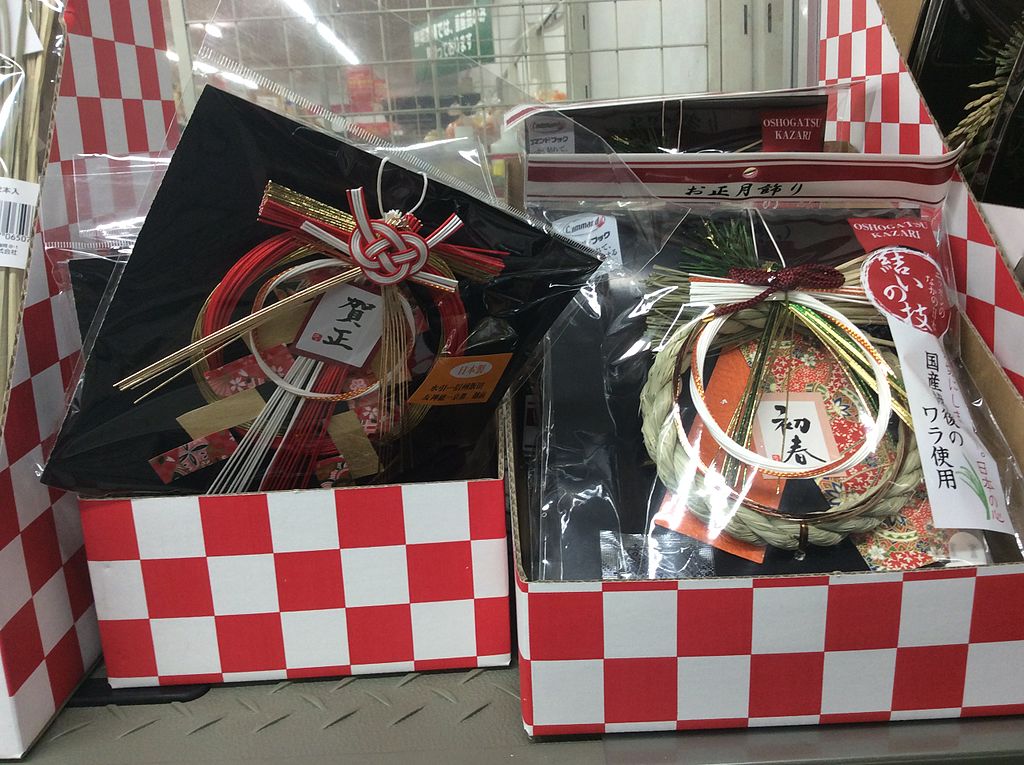The New Year’s, or “Shōgatsu,” is Japan’s most significant holiday, akin to Christmas in the West. The nation pauses for a few days, allowing people to gather with families and partake in age-old traditions. Here’s a glimpse into some of these customs, with a particular focus on practices prevalent in the Nagoya area:
Festive Gatherings – Bōnenkai and Shinnenkai
In December, Bōnenkai parties (year-forgetting gatherings) are common, where friends and coworkers unite to bid farewell to the old year with food and drinks. Shinnenkai (New Year parties) take over as the New Year dawns, continuing the celebrations.
Nengajo (New Year’s Cards)
New Year greeting cards are often adorned with zodiac signs. In Nagoya, like the rest of Japan, these cards are a staple, symbolizing good wishes for the coming year.
Fukubukuro (Lucky Bags)
A delightful New Year’s custom is purchasing fukubukuro, surprise gift bags offering more value than their cost. These bags, often featuring unique local goods, are a hit in Nagoya. Popular department stores in Nagoya, like Matsuzakaya and Mitsukoshi, offer these lucky bags with various contents.
New Year’s Eve Watch – Kōhaku Uta Gassen
Families across Nagoya and Japan tune in to this iconic TV show, a musical battle between male and female artists, marking the year’s end.
Toshi-Koshi Soba (Year-Crossing Noodles)
Eating soba noodles on New Year’s Eve symbolizes a transition into the new year with longevity and resilience.
O-Zouni (New Year Soup)
This soup, often containing mochi (rice cakes), is a staple first meal of the New Year. It’s a tradition with variations across regions, including Nagoya.
Osechi-Ryōri (Traditional New Year’s Cuisine)
Osechi-Ryōri, an assortment of symbolic dishes, is prepared to be enjoyed on the first days of the New Year. In Nagoya, these dishes often include local flavors and ingredients.
Hatsumōde (First Shrine Visit of the Year)
In Nagoya, the popular spot for Hatsumōde is the Atsuta Jingu, a shrine steeped in history and cultural significance.
Hatsuhinōde (First Sunrise of the Year)
Hatsuhinode involves taking in the first sunrise of the year. The best place to enjoy this is along the ocean or on a mountain, although anywhere will do. The main point is to reflect on what a great year lies ahead and to mark the occasion.
Otoshidama (Children’s New Year Gifts)
It is a joyful tradition where children receive money in special envelopes, a custom widely practiced in Nagoya.
Susuharai or Osouji (Year-End Cleaning)
Before the New Year, thorough cleaning is done in homes and businesses. In Nagoya, this includes traditional decorations and the renewal of certain household items.
New Year Decorations
Unique decorations like kadomatsu, manekineko, kumade, and kagami mochi each symbolize luck and prosperity for the New Year.
In Nagoya, these traditions celebrate and reflect the region’s cultural heritage, welcoming the New Year with joy, reverence, and hope.




